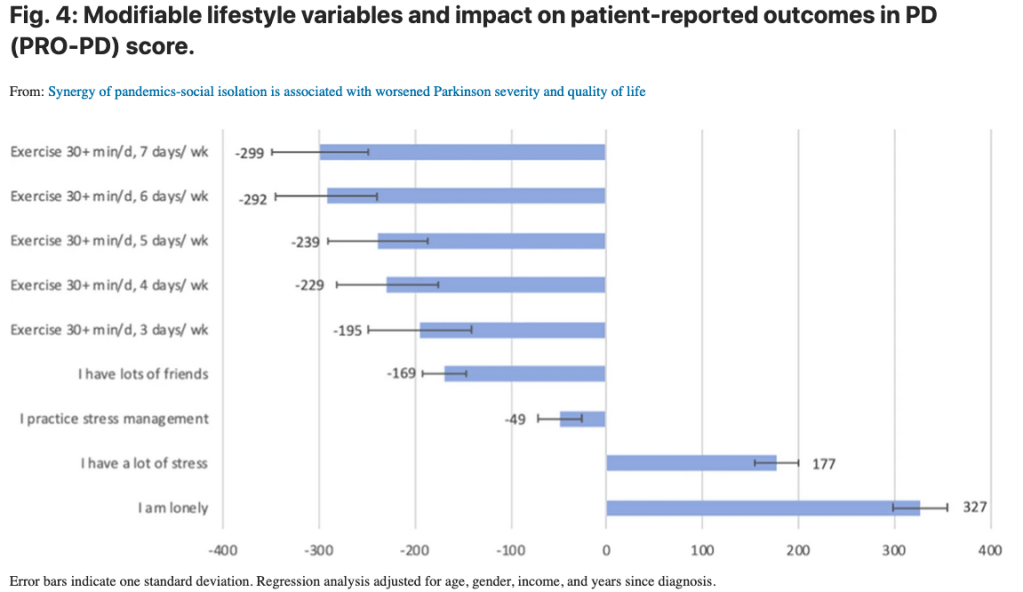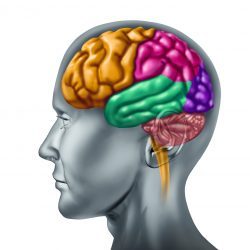“A person is a person through other persons; you can’t be human in isolation; you are human only in relationships.” Desmond Tutu
“There is a difference between solitude and isolation. One is connected and one isn’t. Solitude replenishes, isolation diminishes.” Henry Cloud
Précis: Humans need connection, contact, and social interactions to thrive and survive. We define social isolation as the absence or loss of integration from one’s existing social environment. Research in this area of social support has shown that the loss of social interactions can promote stress in the individual, which predicts an inadequate response in one’s immune system. By contrast, loneliness is an undesirable emotional state in which there is social isolation or dissatisfaction between actual and desired social bonds. Research on loneliness has found that stress-related inflammation occurs in older adult populations. What has not been studied is the relationship of lost social interaction and loneliness related to Parkinson’s and its symptoms, signs, and quality-of-life.
Social isolation and Parkinson’s: Indu Subramanian et al. recently published an outstanding article involved with measuring social isolation and its effect on Parkinson’s symptoms and quality of life [Subramanian, I., Farahnik, J. and Mischley, L.K., 2020. Synergy of pandemics-social isolation is associated with worsened Parkinson severity and quality of life. npj Parkinson’s Disease, 6(1), pp.1-8. This is an open access publication and can be downloaded, click here]. I will briefly summarize some of the critical results to this work, and some of the implications with Parkinson’s with the existing COVID-19 pandemic.
“We don’t function well as human beings when we’re in isolation.” Robert Zemeckis
Background on Social Isolation, Loneliness and the Detrimental Effects on Health: When compared to smoking and obesity, social isolation has been found to also be linked to increased mortality in older populations. The work of Holt-Lunstad and associates reported that the risk of death increased by 26%, 29%, and 32% for older populations being lonely, socially isolated, and living alone, respectively. [Holt-Lunstad, J., Smith, T.B., Baker, M., Harris, T. and Stephenson, D., 2015. Loneliness and social isolation as risk factors for mortality: a meta-analytic review. Perspectives on psychological science, 10(2), pp.227-237.]
Parkinson’s and the Possible Resultant Social Isolation: In various parts of the world, People-with-Parkinson’s (PwP) have been greeted and treated by social isolation. Maffoni et al., found PwP by combined motor- and non-motor-defects can be thought of to have a stigma [Maffoni, M., Giardini, A., Pierobon, A., Ferrazzoli, D. and Frazzitta, G., 2017. Stigma experienced by Parkinson’s disease patients: a descriptive review of qualitative studies. Parkinson’s Disease, 2017.] Perepezko et al showed that depression in PwP contributed to reduced social functions [Perepezko, K., Hinkle, J.T., Shepard, M.D., Fischer, N., Broen, M.P., Leentjens, A.F., Gallo, J.J. and Pontone, G.M., 2019. Social role functioning in Parkinson’s disease: A mixed‐methods systematic review. International journal of geriatric psychiatry, 34(8), pp.1128-1138.]. Finally, Karlsen et al. found that depression in PwP contributed to social isolation [Karlsen, K.H., Larsen, J.P., Tandberg, E. and Mæland, J.G., 1999. Influence of clinical and demographic variables on quality of life in patients with Parkinson’s disease. Journal of Neurology, Neurosurgery & Psychiatry, 66(4), pp.431-435.].
“Although I am a typical loner in my daily life, my awareness of belonging to the invisible community of those who strive for truth, beauty, and justice has prevented me from feelings of isolation.” Albert Einstein
Results from the Study of Subramanian et al.:
- A survey of >1500 participants claiming to have a diagnosis of Parkinson’s (PRO-PD, Patient-Reported Outcomes in Parkinson’s Disease) found that more than 50% of the individuals who said ‘true’ to the statement “I am lonely” exhibited greater symptom severity.
- Survey results of quality-of-life (QoL) by the PwP showed that the higher the QoL score signified that the PwP answered they had a lot of friends. By contrast, the lower QoL score from the PwP generally found they were lonely.
- Tatangelo et al. reported that for the general public being in a relationship resulted in improved and sustained good health [Tatangelo, G., McCabe, M., Campbell, S. and Szoeke, C., 2017. Gender, marital status and longevity. Maturitas, 100, pp.64-69.]. In the PwP survey, it was noted that those with a ‘poor’ QoL had an equally likely chance to be single or partnered. However, as the QoL improved in the PwP participants, likewise did the chance of being married or in a partnership with someone.
- Survey participants who responded that they were under a lot of stress showed a faster rate of progression of their disorder. Importantly, those who said either that they used stress management or frequently exercised showed a slower rate of progression. Being lonely showed significantly increased rates of progression in the PwP survey participants.
- PRO-PD scores were found to be significantly lower for survey participants with a lot of friends when compared to those without friends. Furthermore, PwP participants who described themselves as lonely showed PRO-PD scores that were substantially higher than those survey members not lonely.
- *FIGURE 4 in the article shows the relationship of the wide difference in PRO-PD showing the best is exercise and the worst is being lonely. [Subramanian, I., Farahnik, J. and Mischley, L.K., 2020. Synergy of pandemics-social isolation is associated with worsened Parkinson severity and quality of life. npj Parkinson’s Disease, 6(1), pp.1-8.]

- *FIGURE 5 in the article gives individual symptom severity in the PwP survey participants describing themselves as not lonely and lonely. As depicted here, the lonely PwP group showed substantial severity of both motor and non-motor related symptoms compared to the PwP survey participants who reported that they were not lonely. [Subramanian, I., Farahnik, J. and Mischley, L.K., 2020. Synergy of pandemics-social isolation is associated with worsened Parkinson severity and quality of life. npj Parkinson’s Disease, 6(1), pp.1-8.]

Implications of This Study to Parkinson’s and the COVID-19 Pandemic: The results of this paper clearly show that a low quality-of-life led to increased expression of symptoms in PwP survey participants. One self-described limitation of this paper was that concepts and questions about social isolation are open to participants’ interpretation. The ‘quality’ of relationships for each PwP was not addressed in this study; relationships were classified as spouse, partner, friend, or alone. Some readers who cannot influence or significantly modify their social conditions may feel very stressed by the results presented here. I would recommend several things. I would carefully read the entire discussion of this paper for details about how to get help. I would also consider consulting with your physician and social worker in your clinic about getting options to help with loneliness. Maybe you are an introvert and prefer to be alone, and you are not lonely. There is no simple answer. There are several strategies one could use to promote and encourage social engagement. Many different types of exercises are group-oriented, there are book clubs, and movie clubs that could help. Moreover, again, please do not panic.
By now, you have felt the effect of the SARS-CoV-2 coronavirus, otherwise known as COVID-19. We all have had to modify the way we live, and it will likely continue for many months. We must be able to maintain our distance, not gather socially in large groups, we must wear masks and wash our hands frequently, limit our travel, and at times we have been ordered to “shelter in place.” Unfortunately, none of these ‘COVID-19-safety-conditions’ would be good for someone who is living alone, lonely, or with a poor quality-of-life, and also with Parkinson’s. We must get rid of the virus before we can return to our previous life. Then, we can address the issues focused on loneliness, quality of life, and social isolation and their impact on the symptoms of Parkinson’s.
“Other people may complicate our lives, but life without them would be unbearably desolate. None of us can be truly human in isolation. The qualities that make us human emerge only in the ways we relate to other people.” Harold S. Kushner
Cover photo Image by Couleur from Pixabay.
*Reproduction of figures or tables from any open access article is permitted free of charge and without formal written permission from the publisher or the copyright holder, provided that: the figure/table is original; the publisher is duly identified as the original publisher, and the proper attribution of authorship and the correct citation details are given as acknowledgment.





Thank you for doing this work to help others with Parkinson’s. I was diagnosed about two years ago, and have been in denial for much of that time. I am trying to learn how to cope. I have been fairly isolated and afraid to ask others for help. I am 74 and a retired RN.
LikeLiked by 1 person
Robin, thank you for your note and your comments. I would encourage you to come out and not play with denial, I did it for the first year and it was so much easier when I started telling people because everyone was very helpful and supportive. I encourage you to try and keep trying. Being fairly isolated Is a tough situation, I do understand it totally. All I can do is suggest you keep trying and hopefully something will get better this year for you. Good luck and happy new year! Frank
LikeLike
Thank you Frank. Your reply made me feel better…
LikeLiked by 1 person